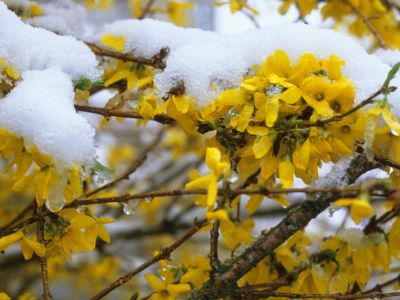Forsythia Winter Damage
Since forsythia is a deciduous shrub, it loses its leaves and goes dormant in winter. However, that doesn’t mean that it can’t suffer from winter cold. Forsythia shrubs are hardy in USDA plant hardiness zones 5 through 8. The shrubs can survive cold temperatures down to -20 degrees F. (-29 C.). Expect forsythia winter damage if zone 5 winters are colder than usual. Roots are not the first thing to be damaged, since they are insulated by snow. Forsythia cold damage can include flower bud death. While flower buds are not the only part of forsythia shrubs exposed in winter, they are the most tender plant parts above ground. Flower buds may fall victim to forsythia winter damage, while stems and leaf buds will not suffer hard. Branches and leaf buds tolerate cold temperatures better than flower buds, but they can still suffer damage. When twigs, stems, and shoots suffer forsythia cold damage, their color changes and they look dry or wrinkled.
Can I Save My Frozen Forsythia?
When you see forsythia winter damage, you are likely to wonder: can I save my frozen forsythia? You’ll want to know how to treat a cold damaged forsythia. The answer to that question is most likely yes. You just may need to think about pruning. Pruning a damaged forsythia will also rejuvenate the shrub. The first thing to do when you notice winter damage in your forsythia is to be patient. Do not run out with the shears and chop off limbs. Wait until late spring or early summer to act in order to give the plant time to recover. By that point, living canes will develop new leaves and shoots. If winter’s cold temperatures have destroyed the flower buds on forsythia cultivars, the shrubs are not going to produce many, if any, flowers in spring. However, they will recover and produce flowers the next year. If you determine that a forsythia trunk or branch is severely damaged, cut it back to the crown. You can cut up to one-third of the canes per year.
